Key Points:
- The world’s largest lake, located in Siberia, has a depth of 5,387 feet or 1,642 meters. This lake houses 20% of the world’s total unfrozen freshwater.
- Crater Lake, one of the deepest in the world, was formed only 7,700 years ago when a massive volcano called Mount Mazama collapsed after the eruption.
- Lake Malawi is estimated to be 1-2 million years old. It’s so clear that on a bright day one can see up to 20 meters into its depths.
Lakes vary in size and depth. Some are enclosed and can only lose water through evaporation, while others are open lakes where the water eventually ends up in the sea. Most lakes are freshwater, while a few lakes are salty.
A lake is an entirely different habitat that hosts a variety of marine biodiversity, ranging from freshwater fish like catfish, salmon, eel, and sturgeon to aquatic birds like swans, ducks, and kingfishers.
Lakes form through an inland depression caused by several reasons, such as tectonic plate movements, volcanic activities, or abandoned parts of rivers.
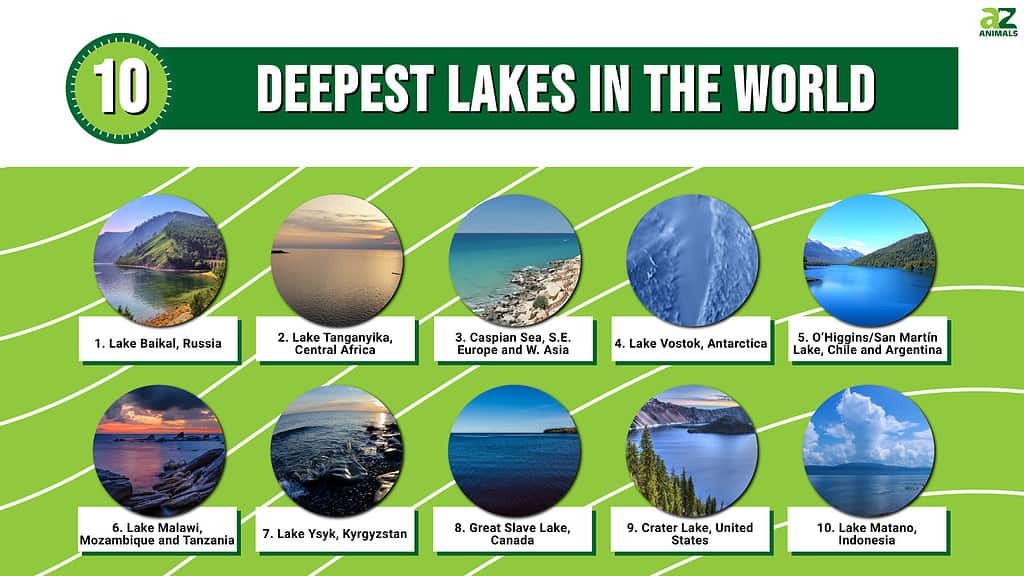
These reasons make every lake’s depth and surface area in the world vary. But which are the deepest lakes in the world? And how deep can they measure below sea level?
This article will list down and explore the 10 deepest lakes in the world.
The 10 Deepest Lakes In The World
10. Lake Matano, Indonesia
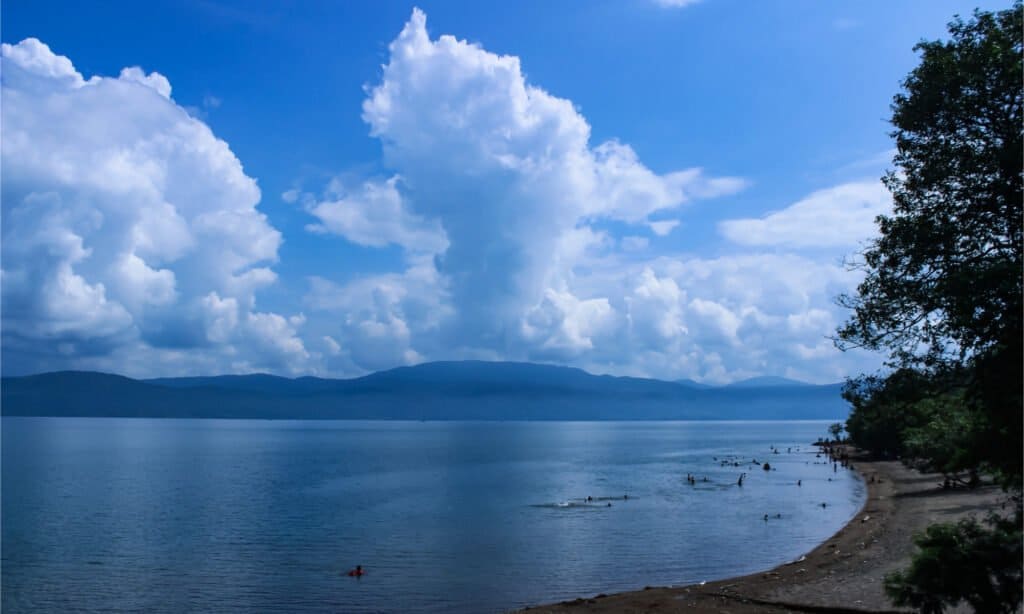
Lake Matano is located in Indonesia and measures up to 590m deep.
©Muailah Sahul/Shutterstock.com
Lake Matano, also called Matana, is a natural lake located in South Sulawesi, Indonesia. Measuring up to 1,940 feet or 590 meters deep, Lake Matano is considered the 10th deepest lake in the world. The surface height above the mean sea level is only 382 meters (1,253 feet), indicating that the lake’s deepest part is below sea level.
Vale Canada Limited, one of the world’s largest nickel mines, owns Lake Matano. Still, the water is crystal clear and provides excellent visibility. Tourists travel to the lake every year for the Lake Matano Festival and popular activities like boating, swimming, fishing, and even diving.
9. Crater Lake, USA
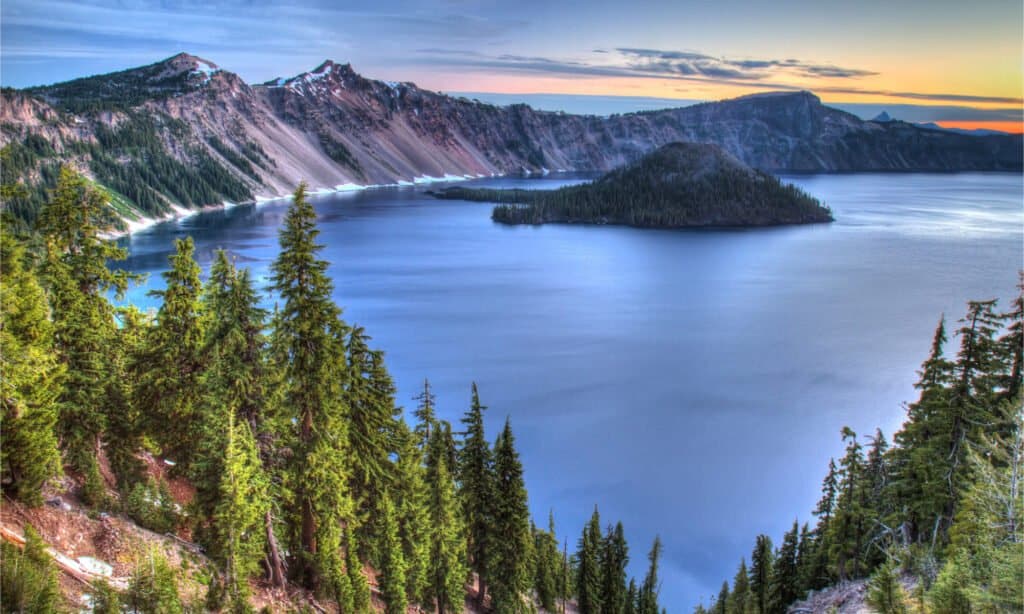
Crater Lake is the deepest lake in the U.S.
©Pierre Leclerc/Shutterstock.com
Ranking as the world’s 9th largest lake, Crater Lake in the south-central Oregon of western United States goes down to 1,943 feet or 594 meters deep, making it the deepest lake in the U.S. The water in the lake, which is known for its magnificent blue color, comes directly from snow or rain. There are no entrances from other waterways or water sources. This lake is thought to be the 9th deepest lake in the world.
This ensures that no debris or mineral deposits are carried into the lake, preserving its rich hue and making it one of the cleanest and clearest bodies of water on the planet. It is one of the main attractions in Crater Lake National Park, and visitors are welcome to swim in approved spots.
Crater Lake is relatively young and was formed about 7,700 years ago when a massive volcano called Mount Mazama collapsed after the eruption. At the time, the Klamath Indians spoke of a mythologized yet authentic account of the collapse and eruption.
As mentioned, lakes form in various ways, and one of those is a volcanic activity that creates a crater at the mouth of the volcano.
8. Great Slave Lake, Canada
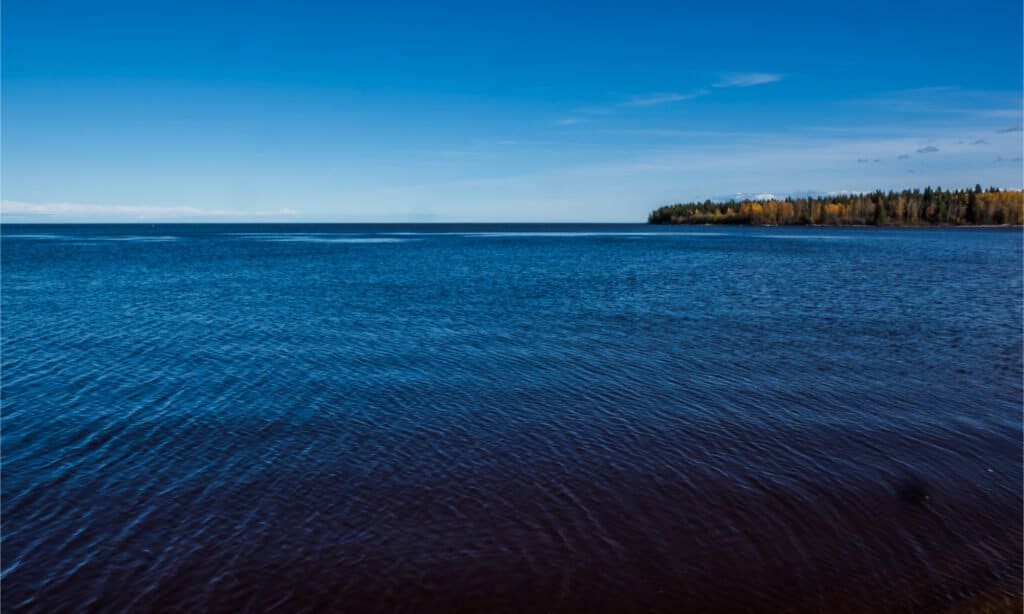
The Great Slave Lake is the deepest lake in North America.
©norikko/Shutterstock.com
If Crater Lake surpasses the depth of all lakes in the U.S, Great Slave Lake owns the crown for being the deepest lake in all of North America. As the world’s 8th deepest lake, Great Slave Lake also makes it to the top 10 largest lakes in the world. The Great Slave Lake measures 2,014 feet or 614 meters deep. It is the 8th deepest lake in the world.
It is located in Canada’s Northwest Territories and is named after an indigenous group called the Slave or Slavey, who inhabited the lake’s shoreline about 8,000 years ago.
Great Slave Lake has a surface area that extends to 10,502 sq mi, making it the second-largest lake in Canada. Because of the cold northern environment, the site is densely populated.
7. Issyk-Kul or Lake Ysyk, Kyrgyzstan

Lake Ysyk is a saline lake.
©kaetana/Shutterstock.com
With a depth of 2,192 feet or 668 meters, Issyk-Kul in Kyrgyzstan makes it the 7th deepest lake in the world. Issyk-Kul is a saline lake, which means it’s an enclosed lake with high salt content. It’s the world’s second-biggest salt lake after the Caspian Sea and the second-largest mountain lake. Issyk-Kul lies at an elevation of 5,270 feet or 1,606 meters in the Tien Shan mountains.
In the country, the lake is locally called Ysyk-Köl, which translates to “Hot Lake.” This is because the lake, despite its high location, never freezes. The temperature in the area typically reaches negative 15 degrees Fahrenheit.
6. Lake Malawi, Mozambique, and Tanzania
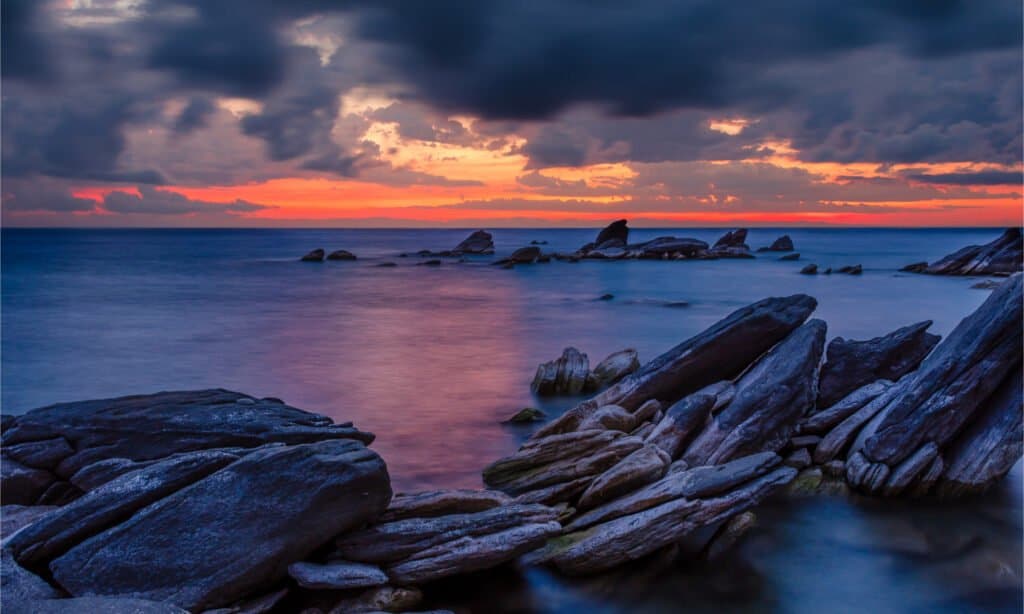
Lake Malawi stretches across two countries between Mozambique and Tanzania.
©Pil-Art/Shutterstock.com
Also known as Lake Nyasa, Lake Malawi is a narrow lake stretching across two countries between Mozambique and Tanzania in Africa. Despite its thin and long surface area, you should never underestimate its depth. Measuring a depth of 2,316 feet or 706 meters, it is the world’s 6th deepest lake in the world.
Lake Malawi is an old lake estimated to be 1-2 million years old. Visibility might reach 20 meters on a good day in this glass-clear lake.
Lake Malawi is also known for its extraordinarily abundant biodiversity. It hosts about a thousand fish species, making it home to 15% of the Earth’s freshwater fish.
5. O’Higgins/San Martín Lake, Chile and Argentina
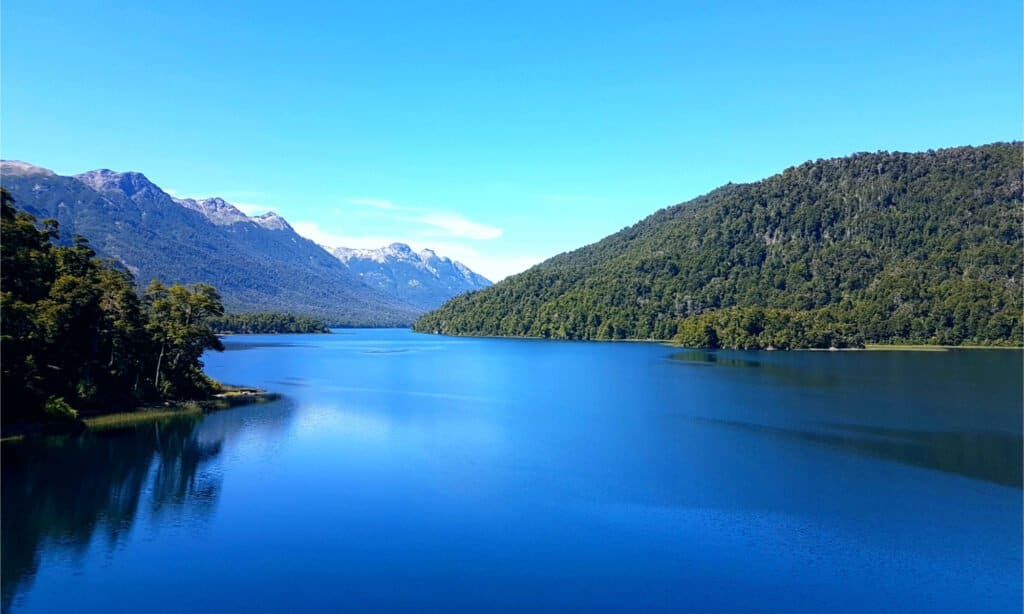
San Martin Lake is popular for its milky-white turquoise color.
©Nicolas De Antoni/Shutterstock.com
The 5th deepest lake on Earth has two names because it stretches over two South American countries: Chile and Argentina. In Chile, the 836-meter-deep lake is called the O’Higgins Lake as it sits near the O’Higgins Glacier. In Argentina, the lake is called San Martín and is famous not only for its 2,743-feet depth but for its milky-white turquoise color caused by the sweeping mountains surrounding it, providing a high concentration of rock flour suspended into the water from the glaciers.
4. Lake Vostok, Antarctica

Located in the iciest continent on the planet, Lake Vostok is difficult to spot from a plain surface
©Goddard Space Flight Center / This file is in the public domain in the United States because it was solely created by NASA. NASA copyright policy states that “NASA material is not protected by copyright unless noted”. (See Template:PD-USGov, NASA copyright policy page or JPL Image Use Policy.)
Not all lakes can be seen by the naked eye. Lake Vostok differs from the other lakes in this list as it is difficult to spot from a plain surface. Located in the iciest continent in the world, Lake Vostok in Antarctica buries about 2.5 miles (4 km) from the surface.
Apart from being the largest known subglacial lake, it is also the deepest. Reaching a maximum depth of 900 meters or 3,000 feet, it is the world’s 4th deepest lake.
Lake Vostok holds nearly 5,400 cubic kilometers of fresh water. Because scientists cannot easily penetrate through the ice, they cannot collect many samples to study life under its waters. However, in 2012, scientists successfully drilled to the lake’s surface. Many new types of bacterial life have been discovered by scientists investigating the samples.
An ice cap covers it, leading to a high gas concentration. Although the lake is believed to be up to 25 million years old, it was only discovered in 2012.
Lake Vostok is known as the world’s largest subglacial lake.
3. Caspian Sea, Kazakhstan, Turkmenistan, Iran, Azerbaijan, and Russia
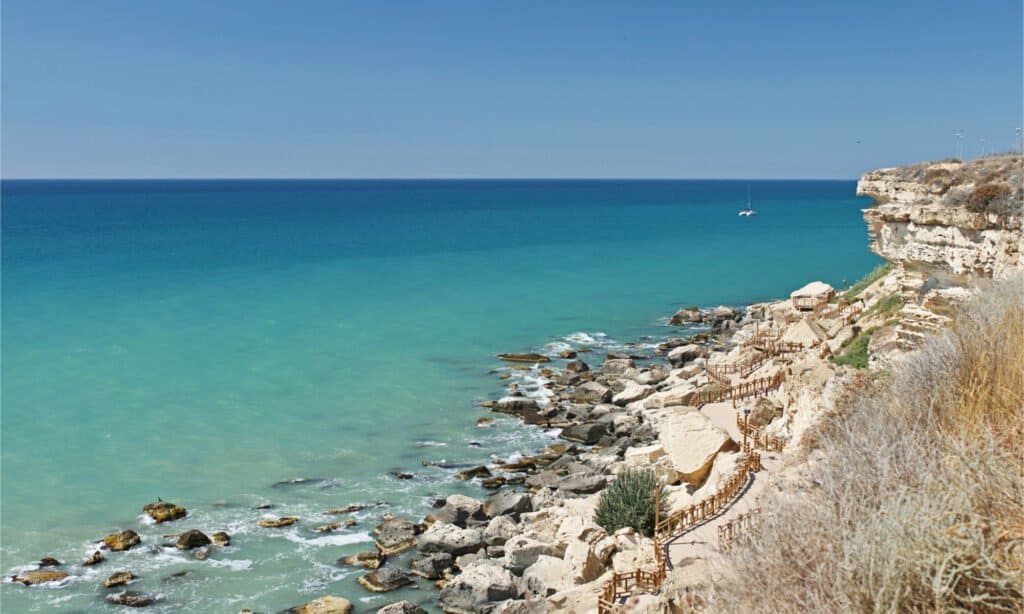
The Caspian Sea is the largest lake in the world.
©Julia Ashikmina/Shutterstock.com
As the largest lake on the planet, there is no doubt that the Caspian Sea stretches not only to two or three countries but to five regions: Russia, Kazakhstan, Iran, Turkmenistan, and Azerbaijan. The Caspian Sea holds a plethora of record-breaking titles.
Apart from being the world’s largest lake, it is also Earth’s biggest saline lake, the largest enclosed basin, and the third deepest lake in the world. The Caspian Sea measures 3,363 feet or 1,025 meters deep.
Despite its name, the Caspian Sea isn’t a sea. Its enormous surface area, nerve-racking depth, and high salinity qualify as a sea, but since it is a fully enclosed basin, it falls under a lake.
The economies of the surrounding countries rely heavily on commercial fishing and tourism to the Caspian shore.
2. Lake Tanganyika, Tanzania, the Democratic Republic of the Congo, Burundi, and Zambia

Considered the African Great Lake, Lake Tanganyika stretches across four countries.
©Naoki Kakuta/Shutterstock.com
Lake Tanganyika is considered the African Great Lake as it stretches across four countries in Africa: Tanzania, Zambia, Burundi, and the Democratic Republic of the Congo. Apart from being the world’s longest freshwater lake, it also sports a depth of 4,820 ft or 1,470 meters, making second of the world’s deepest lakes. Lake Tanganyika seems to be competing with the Caspian Sea in titles as it also is the second oldest lake on the planet, next to Lake Baikal. Like Lake Malawi, it also holds a high level of marine biodiversity and is exceptionally long and narrow.
The lake is known to be home to 18% of the world’s freshwater fish, where species of sardines, sponges, and jellyfish are endemic, feeding the 10 million people living around its basin.
1. Lake Baikal, Russia
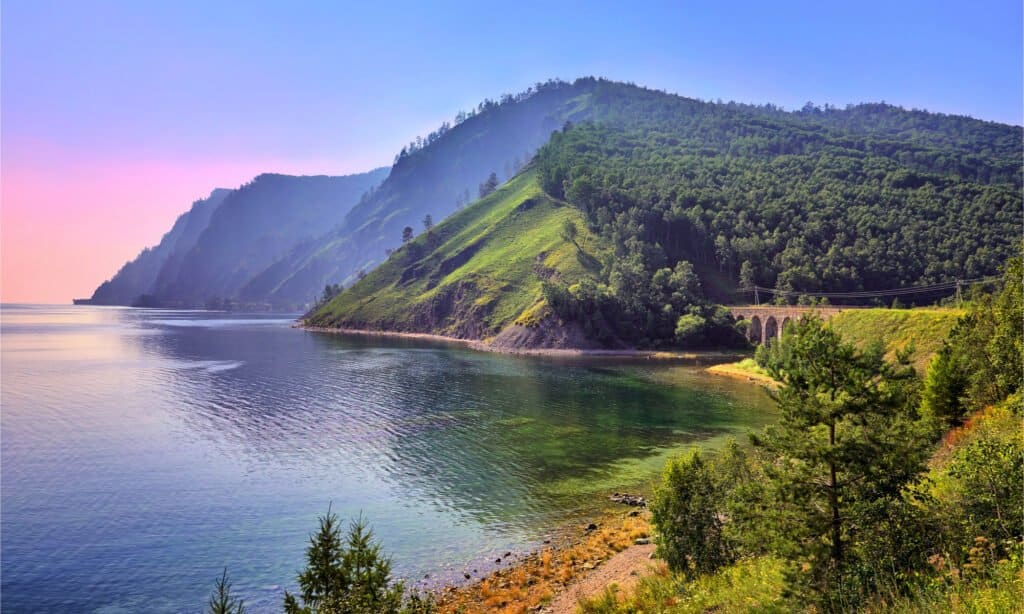
Lake Baikal is the deepest lake in the world with a depth of 1642m.
©Nikitin Victor/Shutterstock.com
Having a maximum depth of 5,387 feet or 1,642 meters, Lake Baikal holds the crown as the deepest lake in the world. Located in Siberia and formed in an ancient rift valley, Lake Baikal is also the world’s largest freshwater lake, containing over 20% of all the Earth’s unfrozen fresh water, even more than all the water of North American Great Lakes combined.
It also happens that this enormous and incredibly deep lake has the clearest waters of all the lakes in the world.
If that is not enough, Lake Baikal is also studied to have been around for 25 million years now, making it the oldest known lake. This UNESCO World Heritage Site hosts an abundant ecosystem as well.
The lake is home to 60 species of fish native to the region, 236 various bird species, 2,500 diverse animals, 1,000 plant varieties, and its freshwater seal population called the Baikal seal. The Baikal seal is the only pinniped that exclusively lives in freshwater habitats.
Honorable Mentions: More of the Deepest Lakes
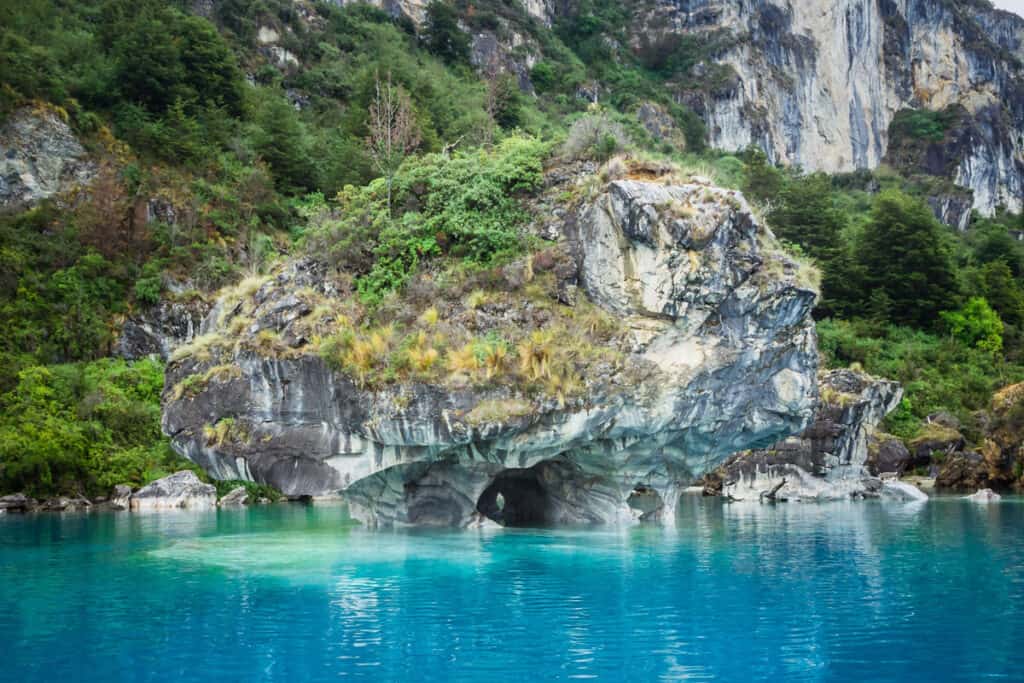
Stretching across both Chile and Argentina, General Carrera Lake is famous for its marble caves as well as its depth.
©iStock.com/Erlantz Pérez Rodríguez
Below are a few welcome additions to our list of the deepest lakes in the world:
- General Carrera Lake This lake, whose depth is 1,923 feet (586 meters), is located in Chile and Argentina. It covers a surface area of 1,923 square feet (586 square meters), and is a favorite spot for Chilean flamingos, black-necked swans, and Andean condors. The lake is known for its marble caves.
- Lake Geneva This famous European lake which lies partly in Switzerland and France is not only known for its beauty and historical significance, including the famous Château de Chillon, a medieval castle located on the lake’s shores in Montreux. This lake is a staggering 1,220 feet (372 meters) deep and covers an area of 1,220 square feet (372 square meters). It’s home to fish like perch and pike, and an array of waterfowl and bird species.
- Lake Tahoe One of the deepest lakes in the United States, as well as the world, is Lake Tahoe, with a maximum depth of 1,645 feet (501 meters). The lake is popular with outdoor enthusiasts for activities like boating, hiking, biking, and more. Wildlife found around it include black bears, mule deer, and bald eagles.
The 10 Deepest Lakes vs. 10 Largest Lakes
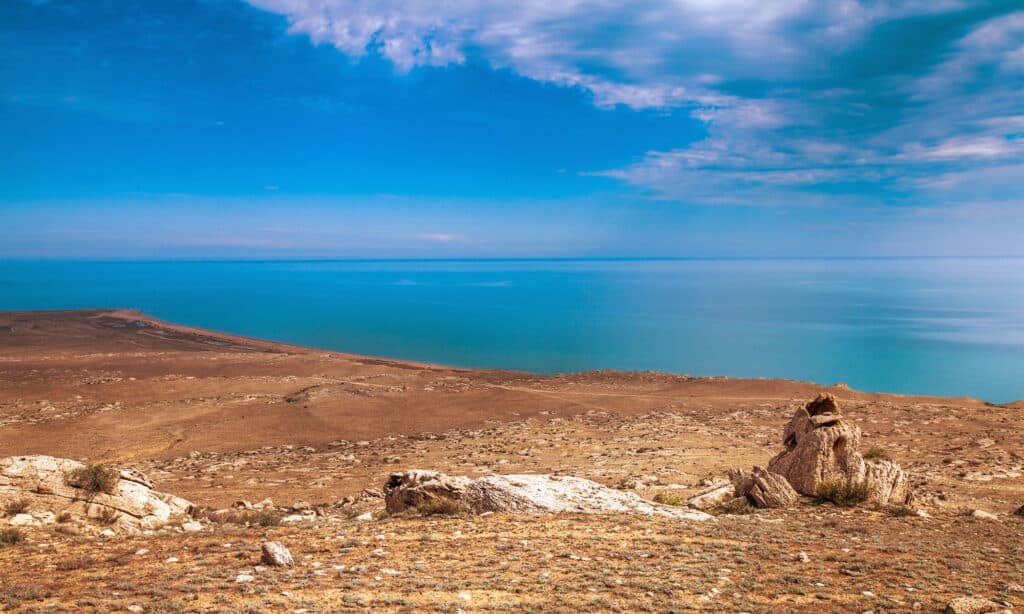
While only the third deepest lake in the world, the Caspian Sea takes the prize as the world’s largest lake.
©Marina Khlybova/Shutterstock.com
While our list includes the lakes with the greatest depths, there are lakes in the world that cover larger areas, and therefore fall in the category “largest lakes in the world.” Below is a chart comparing the top 10 in each category:
| Rank | Deepest Lakes | Largest Lakes |
|---|---|---|
| 1 | Lake Baikal, Russia | Caspian Sea, S.E. Europe and W. Asia |
| 2 | Lake Tanganyika, Central Africa | Lake Superior, United States |
| 3 | Caspian Sea, S.E. Europe and W. Asia | Lake Victoria, East Africa |
| 4 | Lake Vostok, Antarctica | Lake Huron, United States |
| 5 | O’Higgins/San Martín Lake, Chile and Argentina | Lake Michigan, United States |
| 6 | Lake Malawi, Mozambique and Tanzania | Lake Tanganyika, Central Africa |
| 7 | Lake Ysyk, Kyrgyzstan | Lake Baikal, Russia |
| 8 | Great Slave Lake, Canada | Great Bear Lake, Canada |
| 9 | Crater Lake, United States | Lake Malawi, Mozambique, and Tanzania |
| 10 | Lake Matano, Indonesia | Great Slave Lake, Canada |
The photo featured at the top of this post is © MOIZ HUSEIN STORYTELLER/Shutterstock.com
Thank you for reading! Have some feedback for us? Contact the AZ Animals editorial team.






